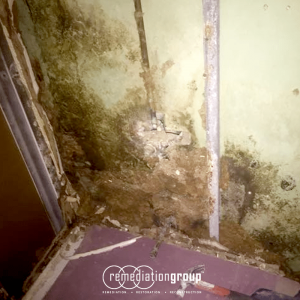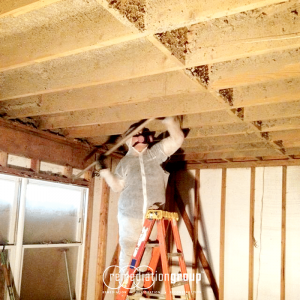&*&*&
Toxic Chinese Drywall
Toxic Chinese Drywall Abatement
Increasing evidence indicates that some of the over 500 million pounds of drywall shipped to the U.S. from China during the housing boom following Hurricane Katrina. This drywall, now more commonly known as Chinese or Toxic Drywall, contained sulfur compounds. Large concentrations of Toxic (Chinese) Drywall was imported into South Florida, Miami, Fort. Lauderdale, and New Orleans as a result of the drywall shortage caused by the storms damage. Toxic Drywall can release sulfur compounds believed responsible for damaging homes and causing health problems.
Primary physical health complaints from Toxic Drywall include the following:
Moderate to severe eye, nose and throat irritation
Respiratory tract infections, increased asthma symptoms
Reoccurring headaches
Insomnia and sleep apnea
Step I:
Identify that new drywall was installed between the time period of 2001 and 2008 A characteristic odor of sulfur compounds is present or A blackening of copper electrical wire or air conditioning coils exists. Expose the backside of drywall to look for stamps or labels that read Made in China
remgroupinc_com-chinesedywall1.jpg remgroupinc_com-chinesedrywall3.jpg
Step II:
The second step is completed provided two of the three criteria in Step I is confirmed.
remgroupinc_com-hvac2copy.jpg
Oxidization of copper building materials due to the airborne presence of elemental sulfur.
Corrosive conditions in the home, demonstrated by the formation of copper sulfide on copper coupons (test strips of metal) placed in the home for a period of 2 weeks to 30 days or confirmation of the presence of sulfur by the blackening of the grounding wires and/or air conditioning coils; Confirmed markings of Chinese origin for the drywall are identified. A section of drywall may need to be removed to allow inspection for markings; Hydrogen sulfide levels are detected using direct-reading instruments when areas around penetrations in the drywall are accessed. Elemental sulfur levels in samples of drywall core found in the home exceeds 10 ppm for orthorhombic sulfur when tested by GC/ECD and/or GC/MS; (a total of three composite samples consisting of four sub-samples will be collected from each condominium) Elevated levels of hydrogen sulfide and/or carbonyl disulfide are emitted from samples of drywall cores or air samples from the home when placed in test chambers using ASTM Standard test
Method D5504-08 or similar chamber or headspace testing; (a total of three composite samples consisting of four sub-samples will be collected from each condominium) Laboratory analysis is to be performed by a laboratory experienced in the analytical methods and procedures. Strontium is not to be used as an indicator of “Chinese Drywall”
remgroupinc_com-chinesedywallabatement.j
Structural phenomenons that may be caused by Toxic Drywall include:
Sparks, arcs, pops, sizzles or a buzzing noise from electrical outlets and appliances
Lights that are unusually dim or flicker without cause
Frequent circuit breaker trips without a known cause
Pungent or foul odors often described as a rotten-egg-like odor
Overheating of electrical components (plugs, switches, cords etc.)
Blackening of copper (pipes, wires etc.)
Abatement Procedures
All drywall within the residence/building must be removed and replaced with new, as well as all the copper components which include wiring, piping and HVAC coils. All insulation and duct work must also be removed and replaced with new. After all of the above listed affected building are removed and prior to the installation of new building materials, the entire interior of the residence/building must undergo decontamination. The decontamination process consists of the removal of all residual drywall dust via HEPA vacuuming and a damp wipe down of all surfaces. Furthermore, RGI uses HEPA filtered air scrubbers remove all drywall dust suspended in the air. There is also an “air out” of the structure for a specified period (typically 3 to 4 weeks) to precede reconstruction. Structural components, metal studs, CPVC piping and other components are not affected and may remain in place.
Reporting and Abatement Documentation
A report is provided by a qualified independent third party to thoroughly document the assessment activities and the procedures utilized during completion of the work. The report is to contain a location map and site plot plan illustrating sample locations and a table with sample site descriptions. Include concisely captioned color photographs as relevant. Laboratory documentation, including qualifications, results of sample analysis, chain of custody, and laboratory QA/QC procedures, is to be included in the report. Work should be conducted by a state licensed professional; if that state has a licensing program. The report must be signed by a C.I.H., a State Licensed Inspector, or other qualified professional.&*&*&
























